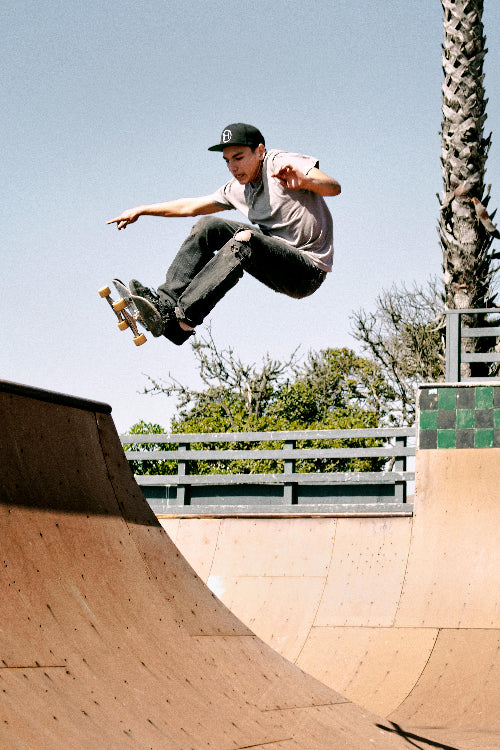Skateboarding isn't just a sport; it's a culture, a lifestyle, and an art form. From the streets to the skate parks, the world of skateboarding is filled with energy, creativity, and a unique sense of freedom. And at the heart of this culture lies skateboarding cinematography – the art of capturing the raw beauty and excitement of skateboarding through film.

In this blog post, we'll dive into the fascinating world of skateboarding cinematography, exploring its techniques, influences, and impact on both the skateboarding community and the wider world of filmmaking.

The Evolution of Skateboarding Cinematography: Skateboarding cinematography has come a long way since its early days. In the 1970s and 80s, skateboarding films were often grainy, handheld affairs, shot on low-quality cameras by skateboarders themselves. However, as skateboarding grew in popularity and mainstream appeal, so too did the quality and sophistication of skateboarding cinematography.

Today, skateboarding films are shot using state-of-the-art equipment, including high-definition cameras, drones, and even virtual reality technology. Filmmakers use a variety of techniques, from slow motion to fisheye lenses, to capture the speed, agility, and style of skateboarders in action.

Techniques and Aesthetics: Skateboarding cinematography is characterized by its dynamic camera movements, bold angles, and gritty aesthetic. Filmmakers often employ unconventional shooting locations, such as abandoned buildings, empty swimming pools, and urban alleyways, to create visually striking images that reflect the raw, underground nature of skateboarding culture.

One of the most iconic techniques in skateboarding cinematography is the fisheye lens, which gives the footage a distorted, wide-angle perspective that enhances the sense of speed and intensity. Slow motion is another common technique used to highlight the intricate footwork and tricks performed by skateboarders, allowing viewers to appreciate the skill and athleticism involved.

In addition to capturing the action, skateboarding cinematography also seeks to convey the atmosphere and energy of the skateboarding scene. This often involves filming candid moments of camaraderie and camaraderie between skateboarders, as well as the vibrant street art and graffiti that adorn many skateboarding hotspots.

Influences and Inspirations: Skateboarding cinematography draws inspiration from a wide range of sources, including music videos, art house films, and documentary photography. Filmmakers like Spike Jonze, Stacy Peralta, and Ty Evans have played a significant role in shaping the aesthetic and style of skateboarding cinematography, with their innovative approach to camera work and storytelling.

Many skateboarding films also incorporate elements of documentary filmmaking, offering viewers a behind-the-scenes look at the lives and personalities of the skateboarders themselves. This blend of fiction and reality adds depth and authenticity to the films, allowing viewers to connect with the characters on a more personal level.

Impact and Legacy: Skateboarding cinematography has had a profound impact not only on the skateboarding community but also on the wider world of filmmaking. Its DIY ethos and rebellious spirit have inspired countless filmmakers to push the boundaries of conventional storytelling and visual aesthetics.

Moreover, skateboarding cinematography has played a crucial role in elevating the profile of skateboarding as an art form and cultural phenomenon. Through films like "Dogtown and Z-Boys" and "Mid90s," skateboarding has transcended its roots as a niche subculture to become a mainstream cultural force, influencing fashion, music, and youth culture around the world.

Conclusion: In conclusion, skateboarding cinematography is a vibrant and dynamic art form that captures the essence of skateboarding culture like no other medium. From its humble beginnings on the streets of Los Angeles to its global influence today, skateboarding cinematography continues to push the boundaries of creativity and storytelling, inspiring audiences and filmmakers alike. As long as there are skateboarders pushing the limits of what's possible on four wheels, there will always be filmmakers there to capture it all on camera.


